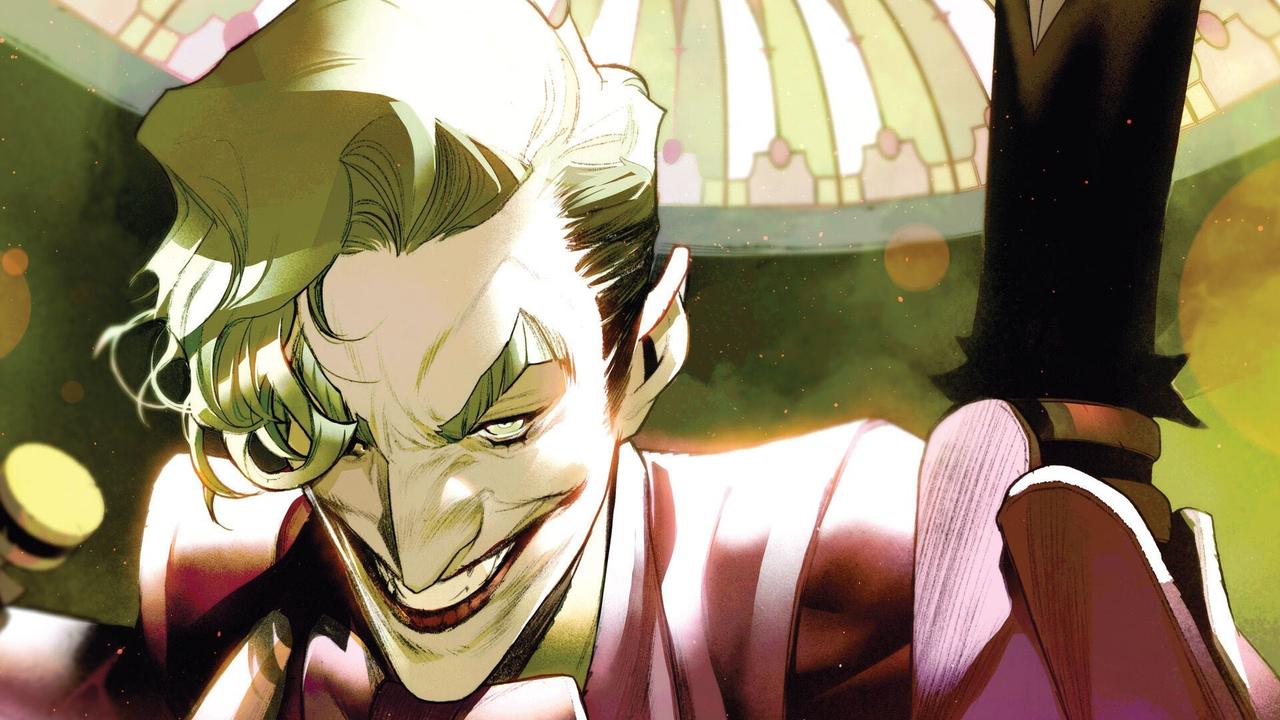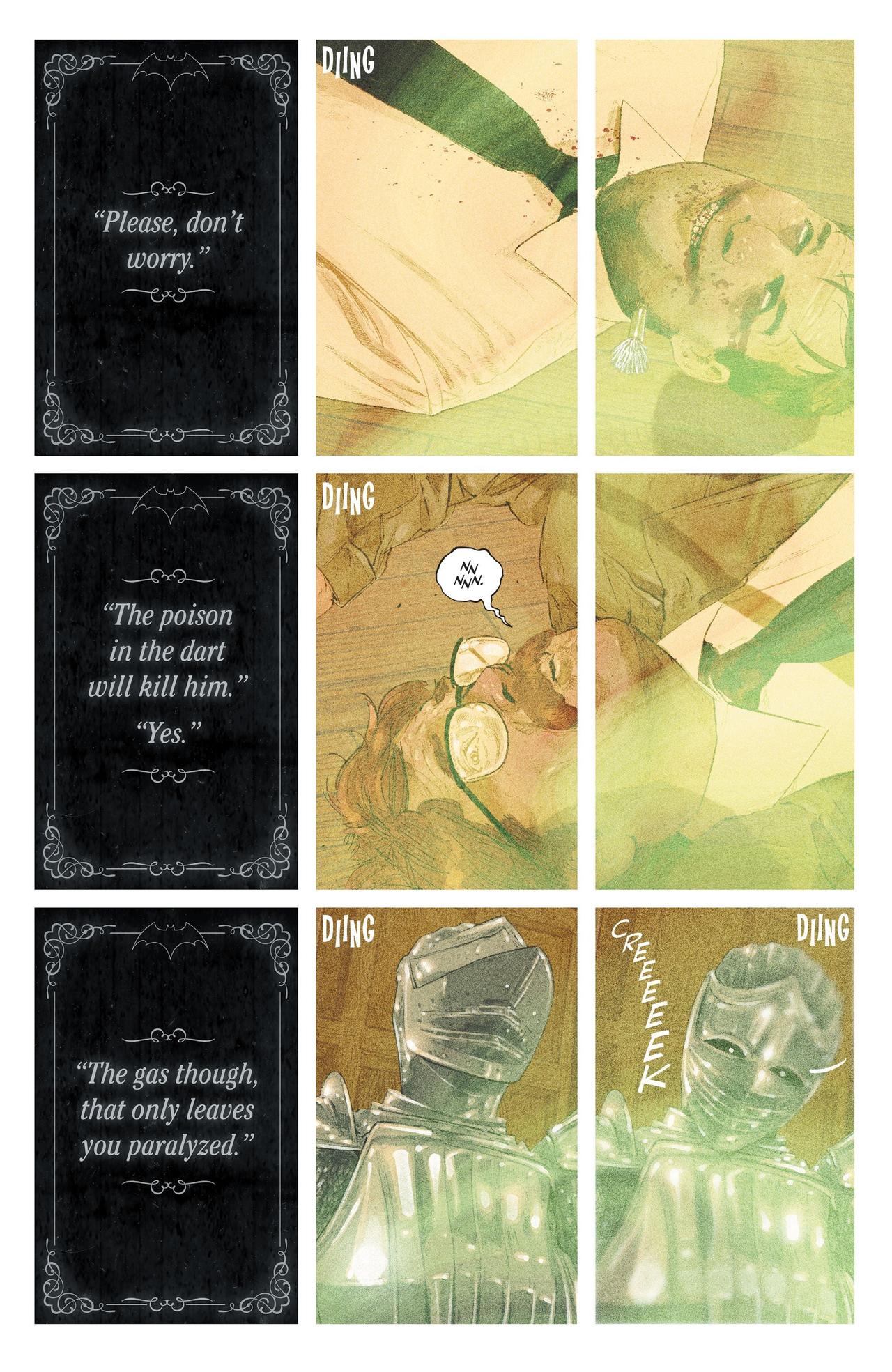If you click on a link and make a purchase we may receive a small commission. Read our editorial policy.
Evil revisited: Tom King and Mitch Gerads reimagine the Joker’s murderous debut
Reuniting for Batman: The Brave and the Bold, King and Gerads double down on the Joker as DC’s most terrifying villain

Ever since he first took the helm of the main Batman ongoing series in 2016, Tom King has left a lasting mark on the Dark Knight mythos, even after leaving the title in 2020. King’s latest Batman story, “The Winning Card,” published in the pages of the anthology series Batman: The Brave and the Bold, reunites him with longtime collaborator Mitch Gerads. In this story, the creative team delves into Bruce Wayne’s early days as the Caped Crusader, providing a reimagining of the Joker’s first rampage through Gotham City.
The initial meeting of longtime nemeses is a story that has been told and retold since 1940’s Batman #1 by Bill Finger, Bob Kane, and Jerry Robinson, updated to reflect modern sensibilities while elevating the sheer menace of the Joker. Across these comic book retellings, the core premise of the Joker targeting the rich and powerful in Gotham is maintained as Batman and Jim Gordon race to stop him from claiming any more victims. King and Gerad’s tale follows the same structure with an on horror that highlights just how much Batman and Gotham City as a whole are unprepared for a supervillain as maniacally murderous as the Joker.
Here’s how King and Gerads craft their own twist on Batman and the Joker’s first fateful encounter, what exactly occurs in the original Golden Age version of the story, how Ed Brubaker and Doug Mahnke modernized it themselves 20 years ago, and how “The Winning Card” fits within King’s larger body of Batman work.
The Winning Card

King and Gerads’ “The Winning Card” has the Joker killing the wealthy and powerful around Gotham as Batman scrambles to learn more about this lethally unhinged new foe. The Joker is much more hands-on than in previous versions of the story and quickly builds a large body count, taking the time to personally hack up a police protection force he immobilizes with his signature poison gas. In this iteration, it’s Gordon who faces the Joker first, and he barely survives because of the Joker’s twisted sense of mercy to show him a gory gag involving his men.
King and Gerads spend more time with the Joker between his announced murders this time around, as he terrorizes random citizens around the city with murderous glee. King has created some frightening material for Batman to explore but “The Winning Card” already stands as his scariest work in the DCU, hauntingly brought to life by Gerads. And as the Joker grows bolder and bolder with each murder, Gordon and Batman experience firsthand the grave mistake in underestimating the supervillain for another common criminal with a superficial gimmick.
The Joker at midnight

Batman #1 not only provides readers with the initial origin for Batman but introduces them to the Joker and Catwoman for the first time, albeit all in separate stories within the issue. The Joker’s debut involves the supervillain hijacking the airwaves to announce a string of millionaire targets he intends to murder at midnight. Despite police protection, the Joker succeeds in poisoning his first wave of victims, with Batman and Robin deducing what the villain is up to before his killing spree can continue, and the Joker arrested at the end.
Despite his supervillain moniker, this version of the Joker isn’t a wisecracking maniac with pretensions at dark humor but is depicted as deadly serious and calculating. In this version, it’s Robin who tracks down the Joker first, and he is ambushed and nearly killed by the supervillain before he’s rescued in the nick of time by Batman. The murders themselves are tied to jewelry heists for the valuables owned by the targets, less ambitious than subsequent iterations of his introduction, a far cry from the maniacal figure looking to plunge Gotham into chaos and death.
The Man Who Laughs

Brubaker and Mahnke’s 2005 prestige one-shot Batman: The Man Who Laughs connects the dots between Frank Miller and David Mazzucchelli’s Batman: Year One and Alan Moore and Brian Bolland’s Batman: The Killing Joke. Months after Batman’s encounter with the Red Hood at Ace Chemicals, the Joker surfaces and announces his plans to murder various millionaires each night around Gotham. After failing to stop the Joker’s initial murders, Batman realizes the Joker’s plot will culminate in him poisoning the city’s reservoir, leading to a memorable confrontation.
Given the altered canonical timeline, The Man Who Laughs omits Robin completely from the story, keeping the partnership between Batman and Gordon. The story more explicitly points to the Joker being the unfortunate Red Hood from The Killing Joke and picks up from Year One’s closing tease of the Clown Prince of Crime’s arrival. But where “The Winning Card” is a straight-up horror story, The Man Who Laughs maintains a more mystery-oriented approach, with horror undertones. The 2005 story is among Brubaker’s last DC work for years, along with his runs on Catwoman and Gotham Central, allowing him and Mahnke to put their own twist on a Golden Age classic.
Tom King’s Dark Knight legacy

Across his Batman stories, King’s focus has always been on presenting a more cerebral Bruce Wayne, a superhero whose humanity and emotional vulnerabilities are evident but aspects of himself that he doesn’t allow to hold him back. The heart of King’s Batman work is the Dark Knight’s relationship with Catwoman, with Batman going as far as to propose to Selina Kyle during King’s main run with their romance explored further in the subsequent DC Black Label maxi-series Batman/Catwoman. In the midst of Bruce and Selina’s love story, the Joker is the murderous fly in the ointment, lethally jealous that he isn’t invited to participate in the nuptials and having his own twisted history with Selina at the start of their respective criminal careers.
The big thing carrying over from King’s past usage of the Joker into “The Winning Card” is a sense of mounting tension and dread before the supervillain inevitably delivers a bloody punchline. The Joker’s murders are frighteningly spontaneous, with any semblance of a joke making sense only to himself, from waiting for wedding invites at random homes in King’s Batman run to befriending a lost girl in “The Winning Card,” like a modern twist on James Whale’s Frankenstein. King and Gerads are careful not to overplay their hand with the Joker, preserving his terrifying unpredictability as he plans one step ahead of what Gordon and Batman have initially prepared for across his killing spree.
Though the Joker has been a serial killer right from his comic book debut, modern depictions of the character have really leaded into his horrifying potential, practically painting him as a straight-up slasher. King presents the Joker less as the thematic counterpoint to Batman and more as the murderous ultimate mystery-- one that can never truly be solved by the World’s Greatest Detective. And in updating their first showdown, King and Gerads give the Joker the advantage as Batman and Gordon come to realize that a new level of evil has arisen in Gotham City.
“The Winning Card” is written by Tom King, illustrated by Mitch Gerads, and lettered by Clayton Cowles. The story continues in the pages of Batman: The Brave and the Bold, on sale July 25 from DC Comics.
Superman: Legacy finds the new onscreen Man of Steel and Lois Lane
Follow Popverse for upcoming event coverage and news
Find out how we conduct our review by reading our review policy
Let Popverse be your tour guide through the wilderness of pop culture
Sign in and let us help you find your new favorite thing.
















Comments
Want to join the discussion? Please activate your account first.
Visit Reedpop ID if you need to resend the confirmation email.